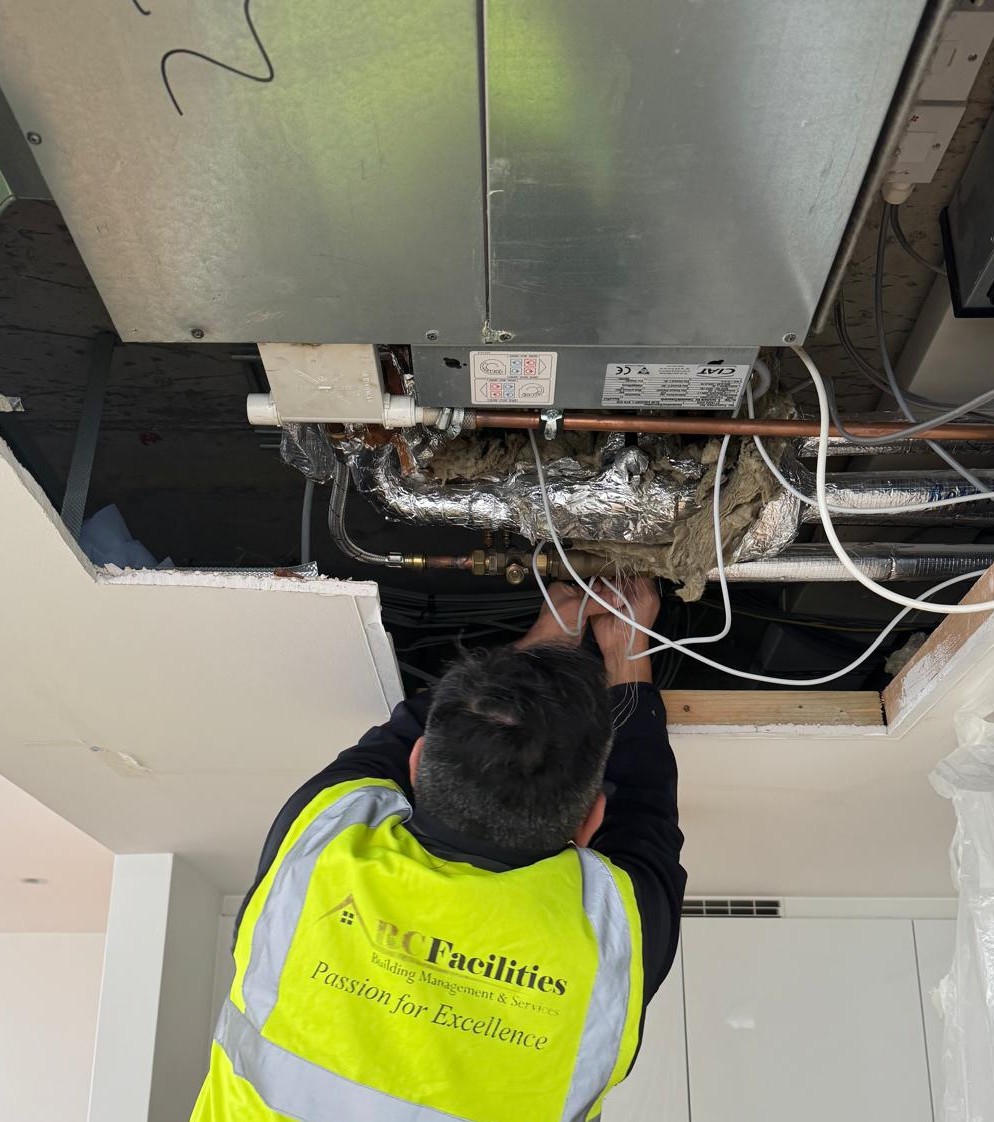
Book your MVHR service | 24/7 emergency callout | Request an energy survey
Modern commercial buildings rely heavily on sophisticated HVAC systems. Commercial building systems are the backbone of comfortable, efficient, and sustainable workspaces. Understanding these systems is crucial for property managers and business owners who want to optimize their building's performance while reducing energy costs.
What Are Commercial Ventilation Building Systems?
Commercial ventilation building systems are systems that help bring fresh air into offices, shops, schools, and other commercial buildings while removing stale air, heat, moisture, and indoor pollutants. They help keep the air clean, comfortable, and safe for people working or visiting the building.
These systems use a network of fans, ducts, and vents to circulate air throughout the building. Some systems simply bring in fresh air and remove old air (known as mechanical ventilation), while others also recover heat from outgoing air to warm up the fresh air coming in (MVHR – Mechanical Ventilation with Heat Recovery). This helps save energy and reduces heating costs.
Ventilation is important because buildings can trap pollutants from cleaning products, printers, cooking, and people’s breath, which can lead to headaches, tiredness, or health issues if not properly managed. Good ventilation also helps control humidity, reducing dampness and mould, which can damage the building and affect health.
.jpeg)
Modern commercial ventilation systems can include:
Why it matters:
Proper ventilation creates a healthier, more comfortable environment for staff and visitors, can help meet health and safety regulations, and reduces energy bills when designed efficiently.
If you manage or own a commercial property, it is important to ensure your ventilation systems are properly designed, regularly serviced, and meet building regulations to support health, productivity, and energy efficiency.
Air Handling Units (AHUs)
.jpeg)
Air Handling Units are central to your building's ventilation system. These units process and distribute air throughout your facility, controlling temperature, humidity, and air quality. Key benefits include:
Fan Coil Units (FCUs)

Fan Coil Units provide localised temperature control in specific zones of your building. These versatile units:
MVHR Systems
.jpeg)
Mechanical Ventilation with Heat Recovery systems are at the forefront of energy-efficient ventilation. These systems:
Understanding and maintaining your commercial ventilation building systems is essential for ensuring a healthy, productive, and energy-efficient environment. Air Handling Units (AHUs), Fan Coil Units (FCUs), and MVHR systems each play a vital role in delivering fresh air, controlling temperature, and improving air quality within your building. Investing in the right system, ensuring it is properly installed, and maintaining it regularly will reduce energy bills, prevent costly repairs, and help you comply with health and safety regulations.
In today’s world, where staff wellbeing and environmental responsibility are priorities, a well-managed ventilation system is not just a technical requirement but a strategic asset for your building. As a property manager or business owner, taking ventilation seriously means investing in comfort, productivity, and your building’s long-term sustainability. If you need support reviewing or upgrading your system, speak with a qualified ventilation specialist to keep your building performing at its best.